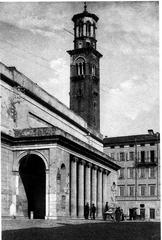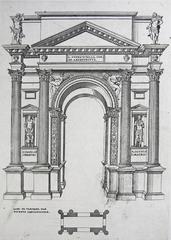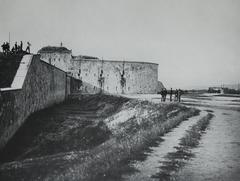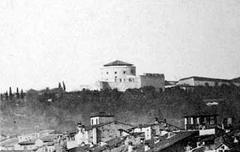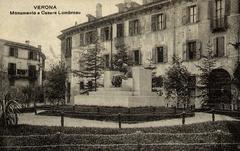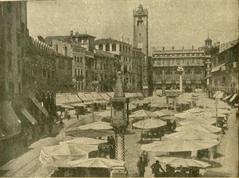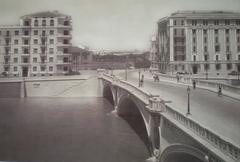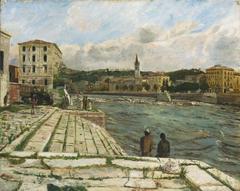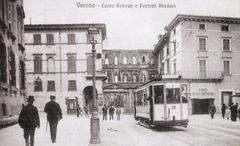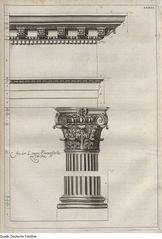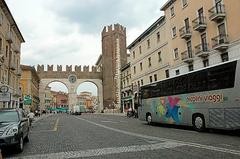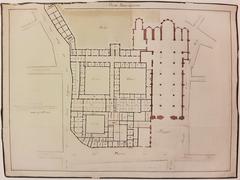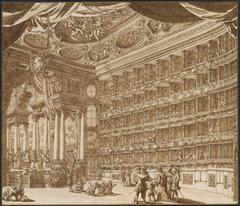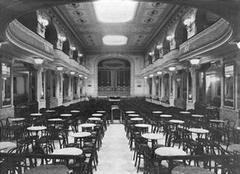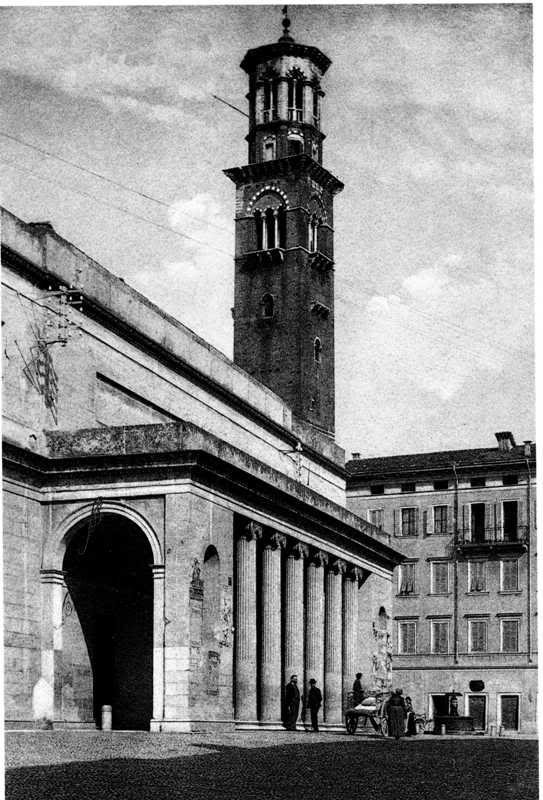
Visiting Giulietta in Verona: Hours, Tickets, and Tips
Date: 01/08/2024
Introduction
Verona, Italy, is a city steeped in history and romance, famously immortalized in William Shakespeare’s tragic love story, ‘Romeo and Juliet.’ Among its many attractions, Casa di Giulietta, or Juliet’s House, stands out as a beacon for lovers and literature enthusiasts alike. This 14th-century Gothic building, located at Via Cappello 23, is said to have belonged to the Capuleti family, the inspiration for the Capulets in Shakespeare’s play (joydellavita.com). The house features the iconic balcony where Juliet is believed to have stood, making it a pilgrimage site for fans of the play and those seeking a touch of romantic nostalgia.
The legend of Romeo and Juliet has transformed Verona into a symbol of love and tragedy, drawing countless visitors each year. The Juliet Club, an organization dedicated to preserving the story’s legacy, receives thousands of letters addressed to Juliet annually. Volunteers, known as ‘Juliet’s secretaries,’ respond to these letters, offering advice and comfort to lovelorn individuals from around the world. This unique cultural phenomenon has only added to the allure of Verona as a city of romance.
In addition to its literary significance, Juliet’s House boasts remarkable architectural features typical of the Gothic period, including arched windows and a stone façade. The courtyard hosts a bronze statue of Juliet, where visitors engage in the tradition of touching the statue’s right breast for good luck in love (abandonedspaces.com). This guide aims to provide a comprehensive overview of visiting Giulietta’s House in Verona, including its historical context, cultural impact, visitor tips, and nearby attractions, ensuring a memorable and enriching experience for all visitors.
Table of Contents
- [Introduction](#introductionintroduction)
- [History and Significance](#history-and-significancehistory-and-significance)
- [Historical Background](#historical-backgroundhistorical-background)
- [The Legend of Romeo and Juliet](#the-legend-of-romeo-and-julietthe-legend-of-romeo-and-juliet)
- [Architectural Significance](#architectural-significancearchitectural-significance)
- [Cultural Impact](#cultural-impactcultural-impact)
- [Visitor Information and Tips](#visitor-information-and-tipsvisitor-information-and-tips)
- [Visiting Hours](#visiting-hoursvisiting-hours)
- [Tickets](#ticketstickets)
- [Accessibility](#accessibilityaccessibility)
- [Best Time to Visit](#best-time-to-visitbest-time-to-visit)
- [Guided Tours](#guided-toursguided-tours)
- [Love Notes](#love-noteslove-notes)
- [Nearby Attractions](#nearby-attractionsnearby-attractions)
- [Piazza delle Erbe](#piazza-delle-erbepiazza-delle-erbe)
- [Verona Cathedral](#verona-cathedralverona-cathedral)
- [Castelvecchio Museum](#castelvecchio-museumcastelvecchio-museum)
- [Ponte Pietra](#ponte-pietraponte-pietra)
- [FAQ](#faqfaq)
- [Conclusion](#conclusionconclusion)
- [Sources](#sourcessources)
History and Significance of Giulietta in Verona, Italy
Historical Background
Verona, a city with a rich tapestry of history, is perhaps most famously known as the setting for William Shakespeare’s tragic love story, “Romeo and Juliet.” The historical significance of Giulietta (Juliet) in Verona is deeply intertwined with the city’s cultural and architectural heritage.
The Casa di Giulietta, or Juliet’s House, is a 14th-century building that has become a pilgrimage site for fans of Shakespeare’s play. Located at Via Cappello 23, near Piazza delle Erbe, this house is said to have belonged to the Capuleti family, the inspiration for the Capulets in the play. The building itself is a fine example of Gothic architecture, featuring a small courtyard and the famous balcony where Juliet is said to have stood.
The Legend of Romeo and Juliet
The legend of Romeo and Juliet has been a significant cultural touchstone for centuries. Shakespeare’s play, written in the late 16th century, was inspired by earlier Italian tales of tragic love. The story’s enduring appeal has made Verona synonymous with romance and tragedy. The Juliet Club, an organization dedicated to preserving the legacy of the story, receives thousands of letters addressed to Juliet each year. Volunteers, known as “Juliet’s secretaries,” respond to these letters, offering advice and comfort to lovelorn individuals from around the world.
Architectural Significance
The architectural significance of Juliet’s House cannot be overstated. The building’s Gothic elements, including its arched windows and stone façade, are characteristic of the period. The interior has been preserved to reflect the era, with period furniture and decorations. The courtyard features a bronze statue of Juliet, created by sculptor Nereo Costantini. According to local legend, touching the statue’s right breast brings good luck in love, a tradition that has made the statue a popular attraction.
Cultural Impact
The cultural impact of Juliet’s House extends beyond its architectural and historical significance. The site has become a symbol of love and hope, attracting visitors from all over the world. The Juliet Club organizes various events and activities, including the “Dear Juliet” awards, which celebrate the most heartfelt letters received each year. The club also offers tours of its archive, where visitors can see the thousands of letters sent to Juliet and even participate in writing responses.
Visitor Information and Tips
For those planning to visit Juliet’s House, here are some essential details:
- Visiting Hours: Juliet’s House is typically open from 8:30 AM to 7:30 PM, but it’s advisable to check the official website for current hours.
- Tickets: Entrance to the courtyard is free, but tickets are required to access the interior and the balcony. Ticket prices are usually around €6 for adults and €4.50 for students and seniors.
- Accessibility: The site is partially accessible to visitors with disabilities, with ramps available in some areas. However, the balcony may not be accessible to all.
- Best Time to Visit: To avoid crowds, consider visiting early in the morning or late in the afternoon. Weekdays are generally less crowded than weekends.
- Guided Tours: The Juliet Club offers guided tours that provide a deeper understanding of the site’s history and significance.
- Love Notes: Visitors can leave their own love notes on the walls of the courtyard or in Juliet’s mailbox.
Nearby Attractions
While in Verona, there are several other historical sites and attractions worth visiting:
- Piazza delle Erbe: A vibrant market square with stunning historical buildings and statues.
- Verona Cathedral: A beautiful Romanesque church with impressive frescoes and artworks.
- Castelvecchio Museum: A medieval castle housing a vast collection of art and historical artifacts.
- Ponte Pietra: An ancient Roman bridge offering picturesque views of the city.
Conclusion
The history and significance of Giulietta in Verona are deeply rooted in the city’s cultural and architectural heritage. From the iconic balcony to the tradition of writing letters to Juliet, the story of Romeo and Juliet continues to captivate the hearts of visitors from around the world. Whether exploring the Gothic architecture of Juliet’s House or attending a performance at the Arena di Verona, a visit to Verona offers a unique and unforgettable experience.
FAQ
Q: What are the visiting hours for Juliet’s House?
A: Juliet’s House is typically open from 8:30 AM to 7:30 PM, but it’s advisable to check the official website for current hours.
Q: How much are the tickets to Juliet’s House?
A: Entrance to the courtyard is free, but tickets to access the interior and balcony usually cost around €6 for adults and €4.50 for students and seniors.
Q: Is Juliet’s House accessible for visitors with disabilities?
A: The site is partially accessible, with ramps available in some areas. However, the balcony may not be accessible to all.
Q: When is the best time to visit Juliet’s House?
A: To avoid crowds, consider visiting early in the morning or late in the afternoon. Weekdays are generally less crowded than weekends.
Q: Can I leave a love note at Juliet’s House?
A: Yes, visitors can leave love notes on the walls of the courtyard or in Juliet’s mailbox.
Sources
- Joy Della Vita, 2023, Casa di Giulietta
- Juliet Club, 2023, Juliet Club
- Abandoned Spaces, 2023, Juliet’s House
- Giulietta e Romeo, 2023, Arena di Verona
- Malorie’s Adventures, 2023, Juliet’s House
- PlanetWare, 2023, Verona Attractions
